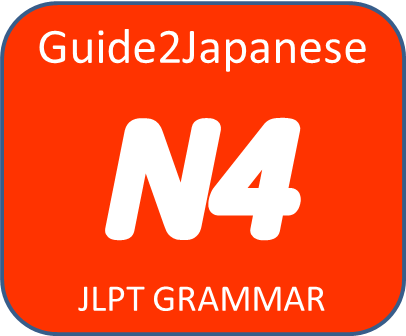JLPT N4 GRAMMAR: やります・あげます・さしあげます (yarimasu, agemasu, sashiagemasu)
Meaning:to give; to offer;to lift up; to hold up; to raise (…..देना、…..पेश करना)
Formation:
名詞(N)1+に+名詞(N)2+やります・上げます・差し上げます。(N1 gives, supplies something to N2)
When the receiver is the person of lower social status or an animal or plant , やります is normally used. However when receiver is a person , あげます is often preferred. さしあげます is used when the speaker wants to show particular deference to the receiver i.e. towards seniors.
| Given by | Verb | Received by |
| 「わたしは」 | さしあげます あげます やります | 「部長に」 「友達に」 「犬・花に」・「子供に」 |
Example sentences:
- 私は 息子に お菓子を やりました。(あげました)
- Watashi wa musuko ni okashi o yarimashita. (Agemashita)
- I gave some sweets to my son.
- मैंने अपने बेटे को मिठाई दी।
- 私は犬にえさをやりました。
- Watashi wa inu ni esa o yarimashita.
- I gave food to the dog.
- मैंने कुत्ते को खाना खिलाया।
- 母は僕にいいセーターを上げました。
- Haha wa boku ni ī sētā o agemashita.
- My mother gave me a good sweater.
- मेरी माँ ने मुझे एक अच्छा स्वेटर दिया।
- 私は友達に本を上げた。
- Watashi wa tomodachi ni hon o ageta.
- I gave a book to a friend.
- मैंने दोस्त को एक किताब दी।
- 私は課長にビールを差し上げました。
- Watashi wa kachō ni bīru o sashiagemashita.
- I gave the section chief a beer.
- मैंने अनुभाग प्रमुख को बीयर पेश की।



